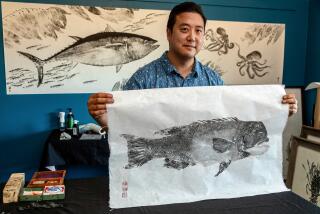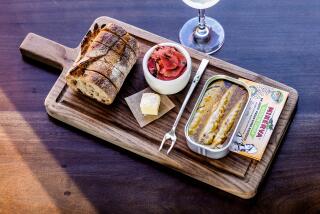It Looks So Realistic
- Share via
Every once in a while, a chef molds a little pig out of pa^te. French chefs often remove the meat from a bird, carefully leaving the skin intact, and grind and flavor it before sewing it back inside the skin. Until a few hundred years ago, it was common to arrange the bird’s feathers around the result to improve the illusion.
The most widespread version of this faintly ghoulish idea of resurrecting the cooked creature involves fish, for the obvious reason that they’re so easy to mold: no limbs and a nice simple shape that doesn’t require any propping up.
The whole thing may have originated from the practice of baking fish with a stuffing. If you put a little ground-up fish meat in the stuffing, you were on the way to making molded fish.
The ancient Romans may have made them. In the surviving Roman cookbook, there’s a recipe for imitation salt fish (don’t ask why they wanted to imitate salt fish) molded into a fish shape. The recipe mentions the existence of fish-shaped molds, which might also have been used with genuine fish meat. That imitation salt fish doesn’t sound very convincing, by the way: It was made from chicken, rabbit or kid livers.
In the Middle Ages, cooks were making molded fish dishes in both Europe and the Middle East, either forming the ground flesh into a fish shape or actually reinserting it into the fish skin.
The idea survives here and there, sometimes in altered form. For instance, the Jewish gefilte fish was originally made of fish skin stuffed (gefullte) with ground fish meat. In the 19th century, cooks just decided to stop messing with the inedible skin; the modern gefilte fish is what used to be the filling.


